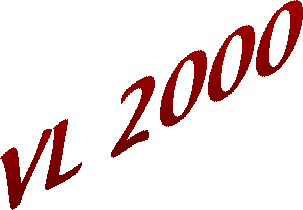
Seattle, Washington
September 10-14, 2000

|
IEEE Symposium on Visual Languages
Seattle, Washington September 10-14, 2000 |

| Tutorial T2 - | Object-Oriented Software Development of Multimedia-Applications with UML |
| Gregor Engels and Stefan Sauer (University of Paderborn, Germany) |
Sunday, September 10, 1:30 PM
In the beginning of the 90s, the great diversity of proposed object-oriented design notations and methods caused a lot of problems in the software development field. In particular, due to a lacking standardized approach, object-oriented models were hardly understandable by designers, who were not an expert of the used, specific notation. Therefore, existing object-oriented models were hardly reusable in projects where another notation has been chosen, and thus one of the main advantages of an object-oriented approach were extremely cut down. This created a strong motivation, particularly in industry, to standardize on a single object-oriented notation. In response, the Object Management Group (OMG) defined the Unified Modeling Language (UML), which it adopted in 1997 as its standard notation for object-oriented analysis and design.
While the UML was clearly successful in unifying the different graphical notations, it has been argued that it was less successful in providing a shared definition of the pragmatics and semantics behind the underlying concepts. In particular, the following issues have been noted:
The working group of the tutorial speakers work since years in the field of object-oriented modelling techniques and currently particularly on UML. Specific research topics are the investigation of the usage of UML for the development of multimedia applications and embedded real-time systems. In particular, it has been investigated how UML can be used to model the internal functionality of a system as well as its external user interface. In addition, concepts have been developed on how to translate UML diagrams into corresponding Java code or GUI builders. In cooperation with industrial partners, UML has been deployed in real application scenarios which provided extensive experiences on how to use UML effectively within a software development process.
Based on these research as well as practical experiences, the tutorial will provide the participants with
It is intended that the participants will have understood all relevant language concepts of UML, that they are able to choose the right diagram type for specific modelling purposes and that they are able to model at least small multimedia applications with the presented extended version of UML.
It is assumed that the participants have some basic knowledge of Entity-Relationship modelling as well as of one object-oriented programming language.
Prof. Dr. Gregor Engels has the chair for database and information systems at the University of Paderborn since 1997. He works since more than 10 years in the field of object-oriented modelling techniques. He gave tutorials on this topic at several national and international conferences (ESEC 91, ESEC 93, ICDE 93, ICDE 94, Softwaretechnik 98, CAiSE 99, VL 99), as well as industrial seminars for different companies in Germany. His research interests are object-oriented modelling concepts, process modelling techniques, and multimedia software engineering. Dipl.-Inform. Stefan Sauer studied computer science at the University of Oldenburg. He received his diploma in computer science in 1997 and works as research assistant in the group of Prof. Engels since 1997. His research interests are extensions of UML for modeling of multimedia applications.